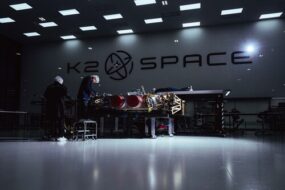A start-up developing the infrastructure for lunar resource extraction—including a power plant, a fleet of rovers, and a processing plant—raised $12M in seed funding from a group of venture investors led by 8VC and Fusion Fund, alongside Day One Ventures, Balerion Space, and Indicator Ventures.
The capital will allow the company to build out a full scale terrestrial demonstration of its system and accelerate its path to testing on the Moon, CEO Saurav Shroff told Payload.
Ground truth: It’s busy times for Starpath: Amid the fundraising push, news broke that NASA was canceling its VIPER water-hunting rover, set to be delivered to the Moon by Astrobotic next year. Shroff scrambled his team to submit an offer to fill the empty cargo bay on Astrobotic’s Griffin lander with their own technology demonstrator.
The company’s planned operational system includes:
- A basketball court-sized solar tower (built in partnership with Solestial).
- A fleet of NASA prize-winning rovers designed to harvest regolith within a 20-km radius.
- An autonomous thermal processing plant to melt ice, split water into hydrogen and oxygen, and liquefy the oxygen.
Facing significant uncertainty about how water ice detected with space-based sensors is actually distributed on the Moon’s surface, Shroff’s team is over-engineering its machines.
“The robot is designed to mine and haul way more material than it needs, breaking rock that is way harder than expected nominal hardness,” Shroff said. “The robot has to be capable of mining thousands or hundreds of thousands of unique sites; we don’t know which site with enough centimeter-level precision is going to have water.”
Ready for the cislunar economy? The business plan is simple: Sell large quantities of LOX propellant to companies like SpaceX and Blue Origin that are already building reusable vehicles to visit the Moon. Saurav and co-founder Mihir Gondhalekar, the company’s CTO, are both SpaceX alums.
Aside from the technology challenge and the inherent uncertainty of operating on the Moon, Starpath will need to see its potential customers (and their primary sponsor, the US government) commit to a long-term lunar presence. Beyond that, expanded exploration of Mars would make a lunar propellant plant more valuable.
“We’ve recently been spending more time as a firm thinking about space and the important opportunity sets that come alongside being a multi-planetary species and have invested in a few space-related companies over the last year,” Zach White, a venture partner at the fund 8VC, told Payload. “We’re super excited to back Saurav, as he exemplifies the type of founder that we love at 8VC—hungrily attacking large problem sets with interesting, novel approaches.”
Correction: This story originally misreported the Astrobotic lander intended to deliver the VIPER rover; it is called Griffin, not Peregrine.




